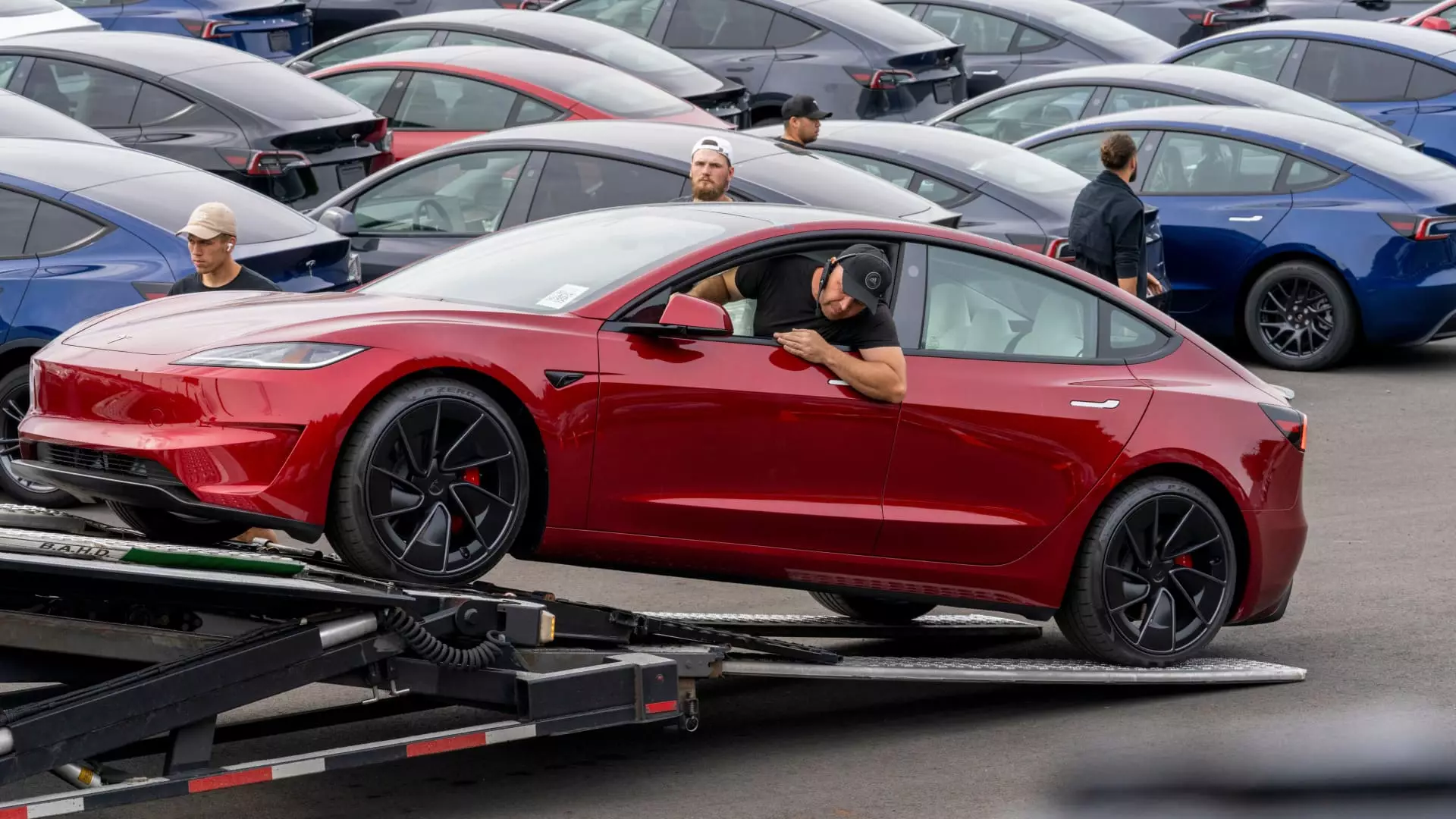Tesla’s recent third-quarter report offers a glimpse into the intricate dynamics shaping the future of electric vehicles (EVs). Released on Wednesday, the figures revealed both triumphs and challenges for the automaker as it navigates an increasingly competitive landscape. The stock market reacted negatively to the report initially, with shares dipping by as much as 3.7% shortly after its release. This reaction underscores the market’s sensitivity to Tesla’s performance metrics, which often serve as benchmarks for industry success.
Tesla reported a total of 462,890 deliveries in Q3 2024, coupled with a production figure of 469,796 vehicles. Analysts, relying on projections from FactSet StreetAccount, had anticipated slightly higher delivery numbers at around 463,310 for the same quarter. However, despite a minor shortfall, the overall performance showed substantial growth compared to the previous year when Tesla delivered 435,059 vehicles and produced 430,488 units. Notably, the latest quarter’s performance was an improvement on Q2, where deliveries stood at 443,956.
These delivery metrics—while not explicitly defined in Tesla’s financial disclosures—are pivotal to how investors view the company’s health. A close examination reveals an upward trajectory but raises questions regarding sustainability. The industry is evolving rapidly, and Tesla finds itself at a crossroads, facing mounting pressure from both established automakers and new entrants.
The competitive arena for EVs is becoming fiercely crowded, with Tesla facing formidable challengers, especially in China. Homegrown companies like BYD and Geely are making significant inroads, while newer competitors such as Li Auto and Nio continue to innovate and expand their market share. This competition is felt in the U.S. as well, where startups like Rivian are gaining traction, and legacy automakers, including Ford and General Motors (GM), are refining their electric vehicle strategies. GM reported a remarkable 60% increase in EV sales compared to the same quarter last year, though its total electric vehicle sales were just 32,100 units, representing a small fraction of its overall sales.
Such dynamics beg the question: Can Tesla maintain its dominance in an era defined by competition? The answer could very well hinge on its adaptability to market trends and consumer preferences, particularly as rivals refine their offerings.
Growth Forecasts: A Cautious Outlook
Despite the complexities of the market, Tesla executives have hinted at a more tempered growth outlook for delivery numbers in 2024. The company has not provided specific guidance for next year but indicated that they expect this year’s growth rate to be lower than the previous year, even with the introduction of the highly anticipated Cybertruck—a product that many hope will reinvigorate interest in the brand.
To bolster its presence, Tesla also reported deploying 6.9 GWh of energy storage products within the same quarter. This diversification could be a strategic move to sustain momentum and market relevance, especially as the demand for renewable energy solutions grows.
While Tesla remains the leader in battery electric vehicle sales in the U.S., it is not without its challenges. The company’s brand image has taken a hit, not only from increasing competition but also from the controversies surrounding CEO Elon Musk. His polarizing public persona and controversial statements on social media often overshadow the company’s achievements and can potentially harm Tesla’s reputation.
As the third quarter progresses, investors will be keenly interested in Tesla’s profit margins, particularly in light of the incentives and financing options the company has been leveraging to increase its sales volume in both the U.S. and China.
In the coming days, Tesla is set to host a marketing event aimed at unveiling its “dedicated robotaxi” design on October 10. This could serve as a significant highlight, especially considering Musk’s long-standing promises regarding self-driving capabilities. While competitors like Waymo and Pony.ai have already launched commercial robotaxi services, Tesla’s innovations in this space could either solidify its lead or further complicate its competitive landscape.
As Tesla continues to navigate the challenges and opportunities presented by the current EV market, all eyes will be on how it adapts to these evolving conditions while striving to remain a leader in innovation and sustainability. The road ahead is fraught with challenges, but it also holds the potential for remarkable growth, provided the company can strategically maneuver through the complexities of the modern automotive landscape.

